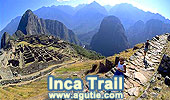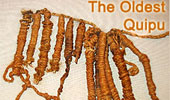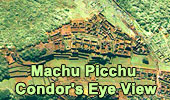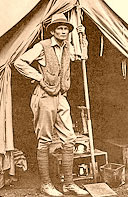|
Hiram Bingham, the American explorer who found the
ruins of Machu Picchu in 1911, wrote:
In the making of roads, bridges, aqueducts,
and irrigation ditches they showed a remarkable knowledge of
engineering. At the time of the Spanish Conquest the Incas paved roads
ran for thousands of miles through the Central Andes from Quito, the
capital of Ecuador, all the way to Argentina and Chile, as well as from
Pacific Cost over the mountains to the warm valleys of the eastern
Andes. Since they had no wheeled vehicles it was not necessary for the
surface of their roads to be leveled. Where the road had to be taken
over a steep hillside, stone stairways were constructed. Where the road
had to pass a small precipice, tunnels large enough to permit the
passage of a loaded beast of burden, whether man or llama, were cut out
of the solid rock.
Over these roads trained runners, operating
in relays, carried messages with extraordinary dispatch from the capital
of the empire to distant magistrates. It is said that fresh fish caught
in the Pacific Ocean were brought over the mountains by the special
messengers of the Inca Emperor and reached his table in excellent
condition. Post houses were provided at convenient intervals so that a
runner would be picked up and carried forward with the least possible
delay. Furthermore, the runners were permitted to chew coca leaves to
deaden fatigue.

The Incas had never acquired the art of
writing, but they had developed an elaborate system of knotted cords
called quipus. These were made of the wool of the alpaca or the
llama, dyed in various colors, the significance of which was known to
the magistrates. The cords were knotted in such a way to represent the
decimal system and were fastened at close intervals along the principal
strand of the quipus. Thus an important message relating to the
progress of crops, the amount of taxes collected, or the advance of an
enemy could be speedily sent by the trained runners along the post
roads.

Caravans of llamas carrying supplies could
proceed safely, if slowly, over the most mountainous country. Tambos,
or rest houses, as well as storehouses, were built wherever it was
likely that those who traveled on the Inca's business - and there were
no other travelers - would need to find suitable accommodations and
supplies. The store-houses were large enough to provide for companies of
soldiers as well as llama drivers.
|

Governor of
the bridges of this kingdom, chaka suyuyuq.
Illustrations from 1615 by The
"Indian Chronicler" Felipe
Guaman Poma de Ayala |
The roads were carried across rivers on
suspension bridges made by braiding together countless strands of
lianas, the ropelike vines found frequently in the jungles of the Amazon
Basin. Using huge cables of remarkable thickness, the Inca engineers
were able to construct bridges two or three hundred feet in length
whenever it was necessary. These bridges, of course, sagged in the
middle, swayed in the wind, and were not at all pleasant to use.
Furthermore, they could be destroyed easily, but the death penalty
anyone found guilty of such an act. Had they not been so highly
regarded, or had the Incas had the foresight to destroy them when
Pizarro and his conquistadors started to enter the Central Andes, the
conquest of Peru would have been extremely difficult, if not well-nigh
impossible.

Source:
‘Lost City of the Incas, The Story of Machu
Picchu and its Builders’ by Hiram Bingham
The American explorer who found the ruins of Machu Picchu in 1911.

Hiram Bingham at Machu Picchu
The inspiration for Indiana Jones?
|